An Accessibility Analysis of Emergency Shelters in Shenzhen Using the Gaussian-Based Two-Step Floating Catchment Area Method and Clustering
Abstract
1. Introduction
2. Literature Review
2.1. Shelter Planning in the Urban Resilience Context
2.2. Methods for Analyzing Shelter Accessibility
2.3. Spatial Clustering Analyses of Shelter Supply and Demand
2.4. Research Gaps and Motivation
3. Materials and Methods
3.1. Research Framework
3.2. Gaussian-Based 2SFCA Method
3.3. K-Means Clustering Analysis
- ①
- Accessibility level—reflecting the service efficiency;
- ②
- Population density—indicating the demand intensity;
- ③
- Road network density—capturing the transportation infrastructure conditions;
- ④
- Facility richness—representing the resource reserve capacity.
3.4. Research Area
4. Results
5. Discussion
5.1. Advantage
5.2. Interpretation and Application
5.3. Model Limitations and Improvements
6. Conclusions
- (1)
- The shelter accessibility demonstrated significant spatial heterogeneity and scale effects. Across service radii of 1 km, 2.5 km, and 5 km, the accessibility showed a trend of decreasing maximum values, increasing averages, and narrowing disparities as the radius expands.
- (2)
- Typical spatial patterns—such as “high demand–high supply–low accessibility” and “low demand–low supply–high accessibility”—were observed in different areas, indicating resource strain in central districts and buffer potential in peripheral zones.
- (3)
- The population density and road network structure are key drivers of accessibility imbalances. The clustering analysis provides a basis for formulating differentiated optimization strategies tailored to local conditions.
Author Contributions
Funding
Institutional Review Board Statement
Informed Consent Statement
Data Availability Statement
Acknowledgments
Conflicts of Interest
Abbreviations
| 2SFCA | Two-Step Floating Catchment Area |
| G2SFCA | Gaussian Two-Step Floating Catchment Area |
References
- Liu, Y.; Yang, Y.; Li, L. Major natural disasters and their spatio-temporal variation in the history of China. Geogr. Sci. 2012, 22, 963–976. [Google Scholar] [CrossRef]
- Giupponi, C.; Gain, A.K. Integrated spatial assessment of the water, energy and food dimensions of the sustainable development goals. Reg. Environ. Change 2017, 17, 1881–1893. [Google Scholar] [CrossRef]
- United Nations Office for Disaster Risk Reduction. Sendai Framework for Disaster Risk Reduction 2015–2030; United Nations Office for Disaster Risk Reduction: Geneva, Switzerland, 2015; p. 32. [Google Scholar]
- Zhang, Z.; Hu, Y.; Lu, W.; Cao, W.; Gao, X. Spatial accessibility analysis and location optimization of emergency shelters in Deyang. Geomat. Nat. Hazards Risk 2023, 14, 2213809. [Google Scholar] [CrossRef]
- Bashawri, A.; Garrity, S.; Moodley, K. An overview of the design of disaster relief shelters. Procedia Econ. Financ. 2014, 18, 924–931. [Google Scholar] [CrossRef]
- Asgary, A.; Azimi, N. Choice of emergency shelter: Valuing key attributes of emergency shelters. Int. J. Disaster Resil. Built Environ. 2019, 10, 130–150. [Google Scholar] [CrossRef]
- Ma, Y.; Xu, W.; Qin, L.; Zhao, X. Site selection models in natural disaster shelters: A review. Sustainability 2019, 11, 399. [Google Scholar] [CrossRef]
- Fang, D.; Pan, S.; Li, Z.; Yuan, T.; Jiang, B.; Gan, D.; Sheng, B.; Han, J.; Wang, T.; Liu, Z. Large-scale public venues as medical emergency sites in disasters: Lessons from COVID-19 and the use of Fangcang shelter hospitals in Wuhan, China. BMJ Glob. Health 2020, 5, e002815. [Google Scholar] [CrossRef]
- Zhao, L.; Li, H.; Sun, Y.; Huang, R.; Hu, Q.; Wang, J.; Gao, F. Planning emergency shelters for urban disaster resilience: An integrated location-allocation modeling approach. Sustainability 2017, 9, 2098. [Google Scholar] [CrossRef]
- Wei, Y.; Jin, L.; Xu, M.; Pan, S.; Xu, Y.; Zhang, Y. Instructions for planning emergency shelters and open spaces in China: Lessons from global experiences and expertise. Int. J. Disaster Risk Reduct. 2020, 51, 101813. [Google Scholar] [CrossRef] [PubMed]
- Dean, K.; Kyei, D. Understanding associations between disasters and sustainability, resilience, and poverty: An empirical study of the last two decades. Sustainability 2024, 16, 7416. [Google Scholar] [CrossRef]
- Liu, X. General description of spatial accessibility. Urban Transp. China 2007, 6, 36–43. [Google Scholar]
- Hansen Walter, G. How accessibility shapes land use. J. Am. Inst. Plan. 1959, 25, 73–76. [Google Scholar] [CrossRef]
- Ashik, F.R.; Mim, S.A.; Neema, M.N. Towards vertical spatial equity of urban facilities: An integration of spatial and aspatial accessibility. J. Urban Manag. 2020, 9, 77–92. [Google Scholar] [CrossRef]
- Zhao, P.; Li, S.; Liu, D. Unequable spatial accessibility to hospitals in developing megacities: New evidence from Beijing. Health Place 2020, 65, 102406. [Google Scholar] [CrossRef] [PubMed]
- Zhang, X.; Hua, L.; James, B.H. Modeling spatial accessibility to parks: A national study. Int. J. Health Geogr. 2011, 10, 31. [Google Scholar] [CrossRef]
- Gong, S.; Gao, Y.; Zhang, F.; Mu, L.; Kang, C.; Liu, Y. Evaluating healthcare resource inequality in Beijing, China based on an improved spatial accessibility measurement. Trans. GIS 2021, 25, 1504–1521. [Google Scholar] [CrossRef]
- Xu, Y.; Zhou, C.; Hu, B. Measuring the accessibility of emergency shelters based on an improved two-step floating catchment area model. Int. J. Digit. Earth 2025, 18, 2479864. [Google Scholar] [CrossRef]
- Lam, C.Y.; Cruz, A.M. Topological network and fuzzy AHP modeling framework for the suitability analysis of evacuation shelters: A case study in Japan. Int. J. Disaster Risk Reduct. 2024, 111, 104696. [Google Scholar] [CrossRef]
- Zhang, W.; Yun, Y. Multi-scale accessibility performance of shelters types with diversity layout in coastal port cities: A case study in Nagoya City, Japan. Habitat Int. 2019, 83, 55–64. [Google Scholar] [CrossRef]
- Su, H.; Chen, W.; Wang, Z. Evaluating the crowdedness of urban emergency shelters based on the improved gravity model. IOP Conf. Ser. Earth Environ. Sci. IOP Publ. 2020, 502, 012046. [Google Scholar] [CrossRef]
- Kaplan, N.; Burg, D.; Omer, I. Multiscale accessibility and urban performance. Environ. Plan. B Urban Anal. City Sci. 2021, 49, 687–703. [Google Scholar] [CrossRef]
- Chen, X.; Kwan, M.-P.; Li, Q.; Chen, J. A model for evacuation risk assessment with consideration of pre-and post-disaster factors. Comput. Environ. Urban Syst. 2012, 36, 207–217. [Google Scholar] [CrossRef]
- Song, Z.; Chen, W.; Zhang, G.; Zhang, L. Spatial accessibility to public service facilities and its measurement approaches. Prog. Geogr. 2010, 29, 1217–1224. [Google Scholar]
- Delamater Paul, L. Spatial accessibility in suboptimally configured health care systems: A modified two-step floating catchment area (M2SFCA) metric. Health Place 2013, 24, 30–43. [Google Scholar] [CrossRef]
- McGrail Matthew, R.; Humphreys, J.S. Measuring spatial accessibility to primary health care services: Utilising dynamic catchment sizes. Appl. Geogr. 2014, 54, 182–188. [Google Scholar] [CrossRef]
- Fransen, K.; Neutens, T.; De Maeyer, P.; Deruyter, G. A commuter-based two-step floating catchment area method for measuring spatial accessibility of daycare centers. Health Place 2015, 32, 65–73. [Google Scholar] [CrossRef]
- Bryant, J., Jr.; Delamater, P.L. Examination of spatial accessibility at micro-and macro-levels using the enhanced two-step floating catchment area (E2SFCA) method. Ann. GIS 2019, 25, 219–229. [Google Scholar] [CrossRef]
- Li, C.; Wang, J. A hierarchical two-step floating catchment area analysis for high-tier hospital accessibility in an urban agglomeration region. J. Transp. Geogr. 2022, 102, 103369. [Google Scholar] [CrossRef]
- Reto, J.; Haldimann, L. MHV3SFCA: A new measure to capture the spatial accessibility of health care systems. Health Place 2023, 79, 102974. [Google Scholar]
- Ding, Z.; Dong, H.; Yang, L.; Xue, N.; He, L.; Yao, X. A study on the emergency shelter spatial accessibility based on the adaptive catchment size 2SFCA method. ISPRS Int. J. Geo-Inf. 2022, 11, 593. [Google Scholar] [CrossRef]
- Shao, D.; Xiong, W. Does High Spatial Density Imply High Population Density? Spatial Mechanism of Population Density Distribution Based on Population–Space Imbalance. Sustainability 2022, 14, 5776. [Google Scholar] [CrossRef]
- Hui, E.C.M.; Li, X.; Chen, T.; Lang, W. Deciphering the spatial structure of China’s megacity region: A new bay area—The Guangdong-Hong Kong-Macao Greater Bay Area in the making. Cities 2020, 105, 102168. [Google Scholar] [CrossRef]
- Shao, W.; Su, X.; Lu, J.; Liu, J.; Yang, Z.; Mei, C.; Liu, C.; Lu, J. Urban resilience of Shenzhen city under climate change. Atmosphere 2021, 12, 537. [Google Scholar] [CrossRef]
- Friedman, A.; Chaki, B. Form and Function of a Shelter. In Fundamentals of Planning and Designing Sustainable Post-Disaster Shelters; Springer Nature Switzerland: Cham, Switzerland, 2025; pp. 97–113. [Google Scholar]
- Spearing, L.A.; Stephens, K.K.; Faust, K.M. Shelter shopping: Where the built environment and social systems meet. Int. J. Disaster Risk Reduct. 2021, 58, 102161. [Google Scholar] [CrossRef]
- Beatini, V.; Rajanayagam, H.; Poologanathan, K. Structural and spatial minimal requirement efficacy of emergency shelters for different emergencies. Buildings 2023, 13, 32. [Google Scholar] [CrossRef]
- Xu, Y.; Wang, W.; Chen, H.; Qu, M. Multicriteria assessment of the response capability of urban emergency shelters: A case study in Beijing. Nat. Hazards Res. 2024, 4, 324–335. [Google Scholar] [CrossRef]
- Nath, R.; Shannon, H.; Kabali, C.; Oremus, M. Investigating the key indicators for evaluating post-disaster shelter. Disasters 2016, 41, 606. [Google Scholar] [CrossRef]
- Liu, S.; Wang, Y.; Zhou, D.; Kang, Y. Two-step floating catchment area model-based evaluation of community care facilities’ spatial accessibility in Xi’an, China. Int. J. Environ. Res. Public Health 2020, 17, 5086. [Google Scholar] [CrossRef]
- Tao, Z.; Cheng, Y.; Dai, T.; Rosenberg, M.W. Spatial optimization of residential care facility locations in Beijing, China: Maximum equity in accessibility. Int. J. Health Geogr. 2014, 13, 33. [Google Scholar] [CrossRef]
- Allan, D.P. Catchments of general practice in different countries—A literature review. Int. J. Health Geogr. 2014, 13, 32. [Google Scholar] [CrossRef]
- Chen, X.; Jia, P. A comparative analysis of accessibility measures by the two-step floating catchment area (2SFCA) method. Int. J. Geogr. Inf. Sci. 2019, 33, 1739–1758. [Google Scholar] [CrossRef]
- Tang, B.; Li, Z.; Chen, Y. Spatial suitability evaluation and layout optimization of emergency shelter: A case study in Tianhe District of Guangzhou City. Heliyon 2025, 11, e41122. [Google Scholar] [CrossRef] [PubMed]
- Mao, K.; Chen, Y.; Wu, G.; Huang, J.; Yang, W.; Xia, Z. Measuring spatial accessibility of urban fire services using historical fire incidents in Nanjing, China. ISPRS Int. J. Geo-Inf. 2020, 9, 585. [Google Scholar] [CrossRef]
- Huang, Y.; Yin, Z.; Chu, H. Suitability assessment of emergency shelters based on gis: A case study in urban function optimization area of shanghai. IOP Conf. Ser. Earth Environ. Sci. IOP Publ. 2019, 234, 012039. [Google Scholar] [CrossRef]
- Kaili, D.; Zhan, Q.; Li, S. GIS-based responsibility area subdivision for metropolitan emergency shelters—Case study of Wuchang district, Wuhan city. In Proceedings of the 2012 6th International Association for China Planning Conference (IACP), Wuhan, China, 17–19 June 2012; pp. 1–4. [Google Scholar]
- Liang, Y.; Xie, Z.; Chen, S.; Xu, Y.; Xin, Z.; Yang, S.; Jian, H.; Wang, Q. Spatial accessibility of urban emergency shelters based on Ga2SFCA and Its improved method: A case study of Kunming, China. J. Urban Plan. Dev. 2023, 149, 05023013. [Google Scholar] [CrossRef]
- Sritart, H.; Miyazaki, H.; Kanbara, S.; Hara, T. Methodology and application of spatial vulnerability assessment for evacuation shelters in disaster planning. Sustainability 2020, 12, 7355. [Google Scholar] [CrossRef]
- Rong, P.; Zheng, Z.; Kwan, M.-P.; Qin, Y. Evaluation of the spatial equity of medical facilities based on improved potential model and map service API: A case study in Zhengzhou, China. Appl. Geogr. 2020, 119, 102192. [Google Scholar] [CrossRef]
- Tang, B.; Wang, D.; Song, Y.; Qiu, J.; Yan, Y.; Zhang, Z. Research on the emergency shelter accessibility in urban communities. Risk Anal. Crisis Response 2017, 7, 230. [Google Scholar] [CrossRef]
- Lee, J.K.; Kim, S.H.; Park, S.H.; Kim, Y.O. A Study on the Facility Location Selection for Emergency Shelter-Catchment area and accessibility analysis of vacant space and shelter-in-place. J. Archit. Inst. Korea 2021, 37, 73–78. [Google Scholar]
- Yao, Y.; Zhang, Y.; Yao, T.; Wong, K.; Tsou, J.Y.; Zhang, Y. A GIS-based system for spatial-temporal availability evaluation of the open spaces used as emergency shelters: The case of Victoria, British Columbia, Canada. ISPRS Int. J. Geo-Inf. 2021, 10, 63. [Google Scholar] [CrossRef]
- Tiznado-Aitken, I.; Muñoz, J.C.; Hurtubia, R. Public transport accessibility accounting for level of service and competition for urban opportunities: An equity analysis for education in Santiago de Chile. J. Transp. Geogr. 2021, 90, 102919. [Google Scholar] [CrossRef]
- Wolff, M. Taking one step further–Advancing the measurement of green and blue area accessibility using spatial network analysis. Ecol. Indic. 2021, 126, 107665. [Google Scholar] [CrossRef]
- Merlin, L.A.; Singer, M.; Levine, J. Influences on transit ridership and transit accessibility in US urban areas. Transp. Res. Part A Policy Pract. 2021, 150, 63–73. [Google Scholar] [CrossRef]
- Nakai, H.; Itatani, T.; Kaganoi, S.; Okamura, A.; Horiike, R.; Yamasaki, M. Needs of children with neurodevelopmental disorders and geographic location of emergency shelters suitable for vulnerable people during a tsunami. Int. J. Environ. Res. Public Health 2021, 18, 1845. [Google Scholar] [CrossRef] [PubMed]
- Zhou, A.; Chen, L.; Zhu, H.; Chen, S. Reasonability of spatial distribution for urban emergency shelter in central district of Beijing at community scale. J. Saf. Environ. 2021, 21, 1662–1669. [Google Scholar]
- Ghorbanzadeh, M.; Ozguven, E.E.; Tenney, C.S.; Leonarczyk, Z.; Jones, F.R.; Mardis, M.A. Natural Disaster Accessibility of Small and Rural Libraries in Northwest Florida. Public Libr. Q 2020, 40, 310–329. [Google Scholar] [CrossRef]
- Su, H.; Chen, W.; Cheng, M. Using the variable two-step floating catchment area method to measure the potential spatial accessibility of urban emergency shelters. Geo J. 2021, 87, 2625–2639. [Google Scholar] [CrossRef]
- Tang, S.; Wang, J.; Xu, Y.; Chen, S.; Zhang, J.; Zhao, W.; Wang, G. Evaluation of emergency shelter service functions and optimization suggestions—Case study in the Songyuan City central area. Sustainability 2023, 15, 7283. [Google Scholar] [CrossRef]
- Ekaputra, R.A.; Lee, C.; Kee, S.H.; Yee, J.J. Emergency shelter geospatial location optimization for flood disaster condition: A review. Sustainability 2022, 14, 12482. [Google Scholar] [CrossRef]
- Yang, J.; Vijayan, L.; Ghorbanzadeh, M.; Alisan, O.; Ozguven, E.E.; Huang, W.; Burns, S. Integrating storm surge modeling and accessibility analysis for planning of special-needs hurricane shelters in Panama City, Florida. Transp. Plan. Technol. 2023, 46, 241–261. [Google Scholar] [CrossRef]
- Faruk, M.; Ashraf, S.A.; Ferdaus, M. An analysis of inclusiveness and accessibility of Cyclone Shelters, Bangladesh. Procedia Eng. 2018, 212, 1099–1106. [Google Scholar] [CrossRef]
- Zhang, D.; Gu, R.Y.; Huang, T.F.; Zhang, G.; Sun, Z.; Guo, H. Research on Spatial Distribution Pattern of Emergency Shelters in Hebei and Its Influencing Factors. J. Inst. Disaster Prev. 2020, 22, 84–91. (In Chinese) [Google Scholar]
- Bauer, J.; Groneberg, D.A. Measuring Spatial Accessibility of Health Care Providers—Introduction of a Variable Distance Decay Function within the Floating Catchment Area (FCA) Method. PLoS ONE 2016, 11, e0159148. [Google Scholar] [CrossRef] [PubMed]
- Liu, T.; Deng, Q.; Wang, S.; Wang, G. Equity Evaluation of Multilevel Medical Facility Allocation Based on Ga2SFCA. J. Urban Plan. Dev. 2023, 149, 14. [Google Scholar] [CrossRef]
- Bayram, V.; Tansel, B.Ç.; Yaman, H. Compromising system and user interests in shelter location and evacuation planning. Transp. Res. Part B Methodol. 2015, 72, 146–163. [Google Scholar] [CrossRef]
- GB/T 51327-2018; Urban Comprehensive Disaster Prevention Planning Standards. Chinese Standard: Beijing, China, 2018.
- GB 51143-2015; Code for Design of Disasters Mitigation Emergency Congregate Shelter. Chinese Standard: Beijing, China, 2015.
- Zhu, L.; Zhong, S.; Tu, W.; Zheng, J.; He, S.; Bao, J.; Huang, C. Assessing spatial accessibility to medical resources at the community level in Shenzhen, China. Int. J. Environ. Res. Public Health 2019, 16, 242. [Google Scholar] [CrossRef]
- Gong, Z.; Wang, L.; Yang, J.; Wang, Y.; Zhang, L. Urban Flood Risk Assessment and Optimization of Shelter Site Selection Following a Pre-Expropriation System. Nat. Hazards Rev. 2025, 26, 04025013. [Google Scholar] [CrossRef]
- Freer, E. Are resources out of reach? Analyzing the accessibility of domestic violence shelter services. Soc. Sci. Q. 2022, 103, 550–564. [Google Scholar] [CrossRef]
- Yang, J.; Alisan, O.; Vijayan, L.; Huang, W.; Ozguven, E.E. Critical Shelter Analysis Considering Social Vulnerability and Accessibility: A Case Study of Hurricane Michael Track Uncertainty. Appl. Spat. Anal. Policy 2025, 18, 30. [Google Scholar] [CrossRef]
- Liu, X.; Zhang, L.; Zhen, J.; Wang, W. Planning for service space of medium-and long-term shelters based on multi-agent evacuation simulation. Nat. Hazards 2024, 120, 12769–12796. [Google Scholar] [CrossRef]
- Wang, X.; Guan, M.; Dong, C.; Wang, J.; Fan, Y.; Xin, F.; Lian, G. A multi-indicator evaluation method for spatial distribution of urban emergency shelters. Remote Sens. 2022, 14, 4649. [Google Scholar] [CrossRef]
- Chelariu, O.E.; Iațu, C.; Minea, I. A GIS-based model for flood shelter locations and pedestrian evacuation scenarios in a rural mountain catchment in Romania. Water 2022, 14, 3074. [Google Scholar] [CrossRef]
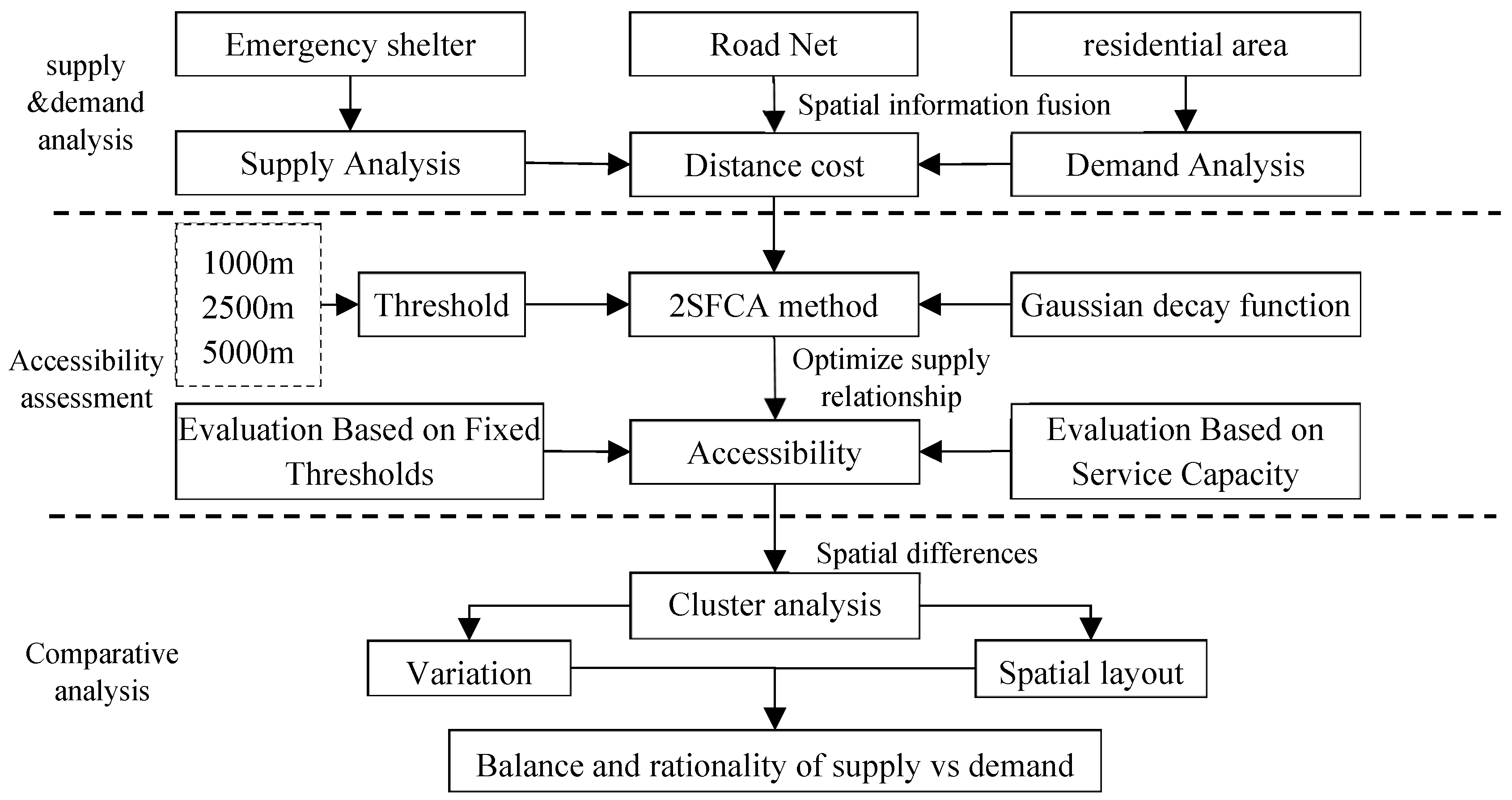
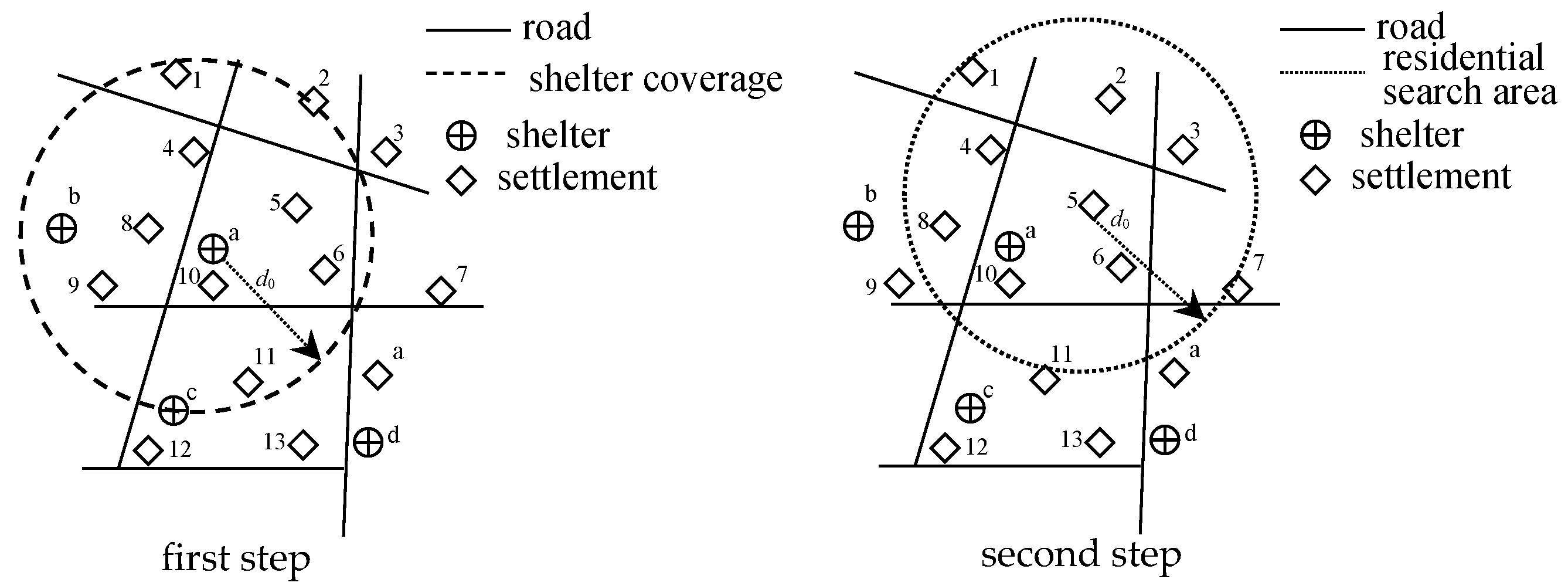
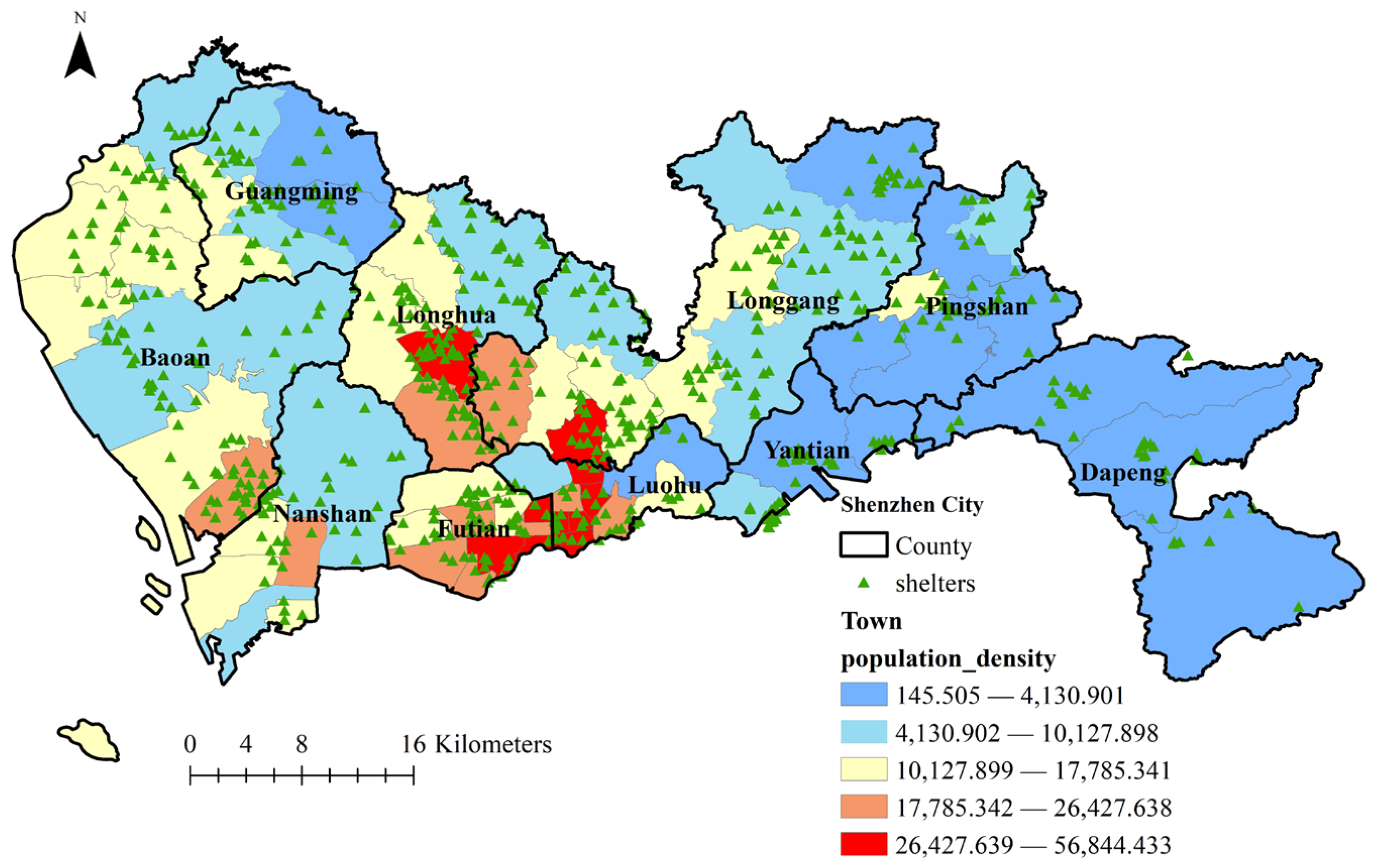
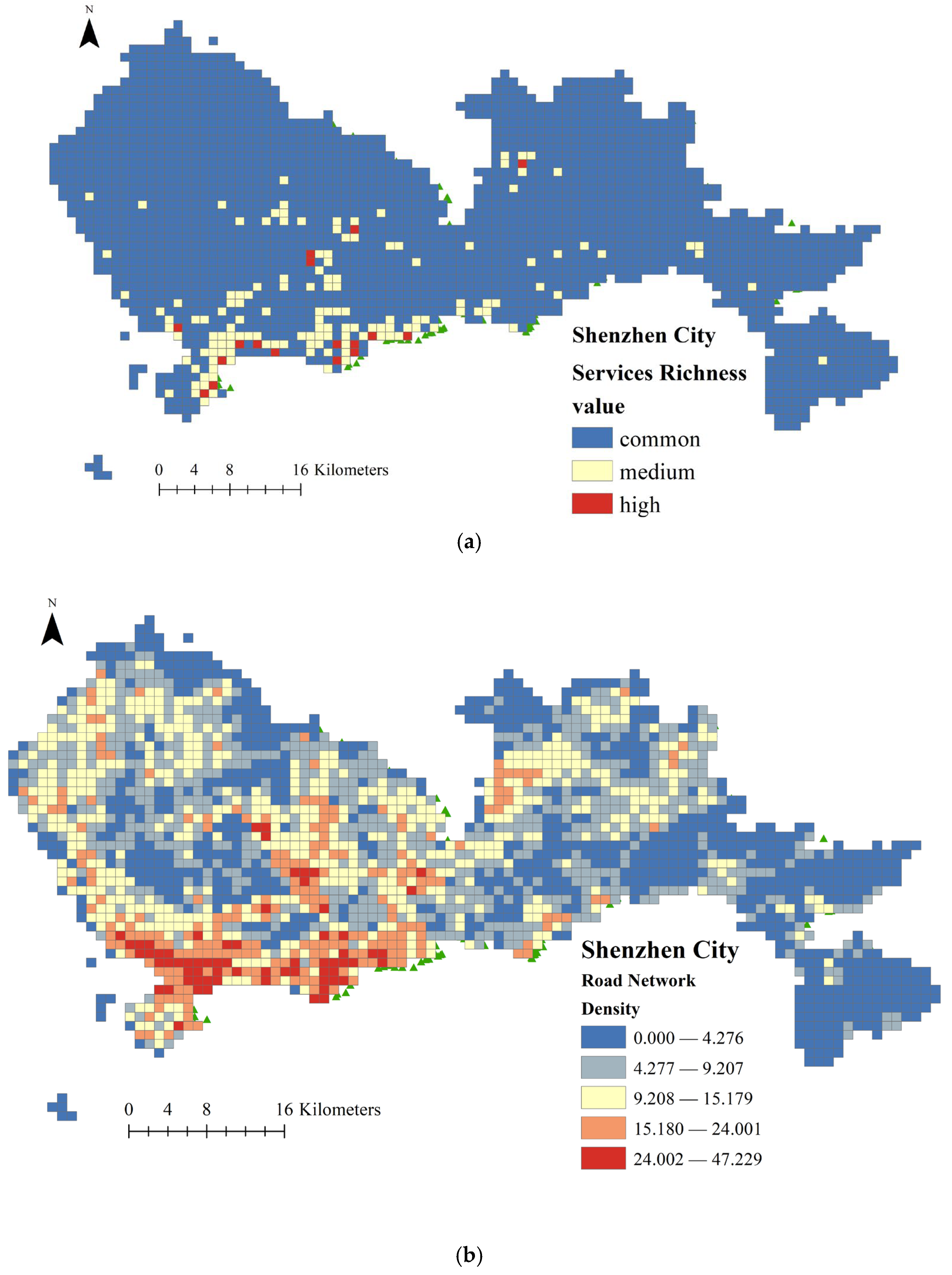
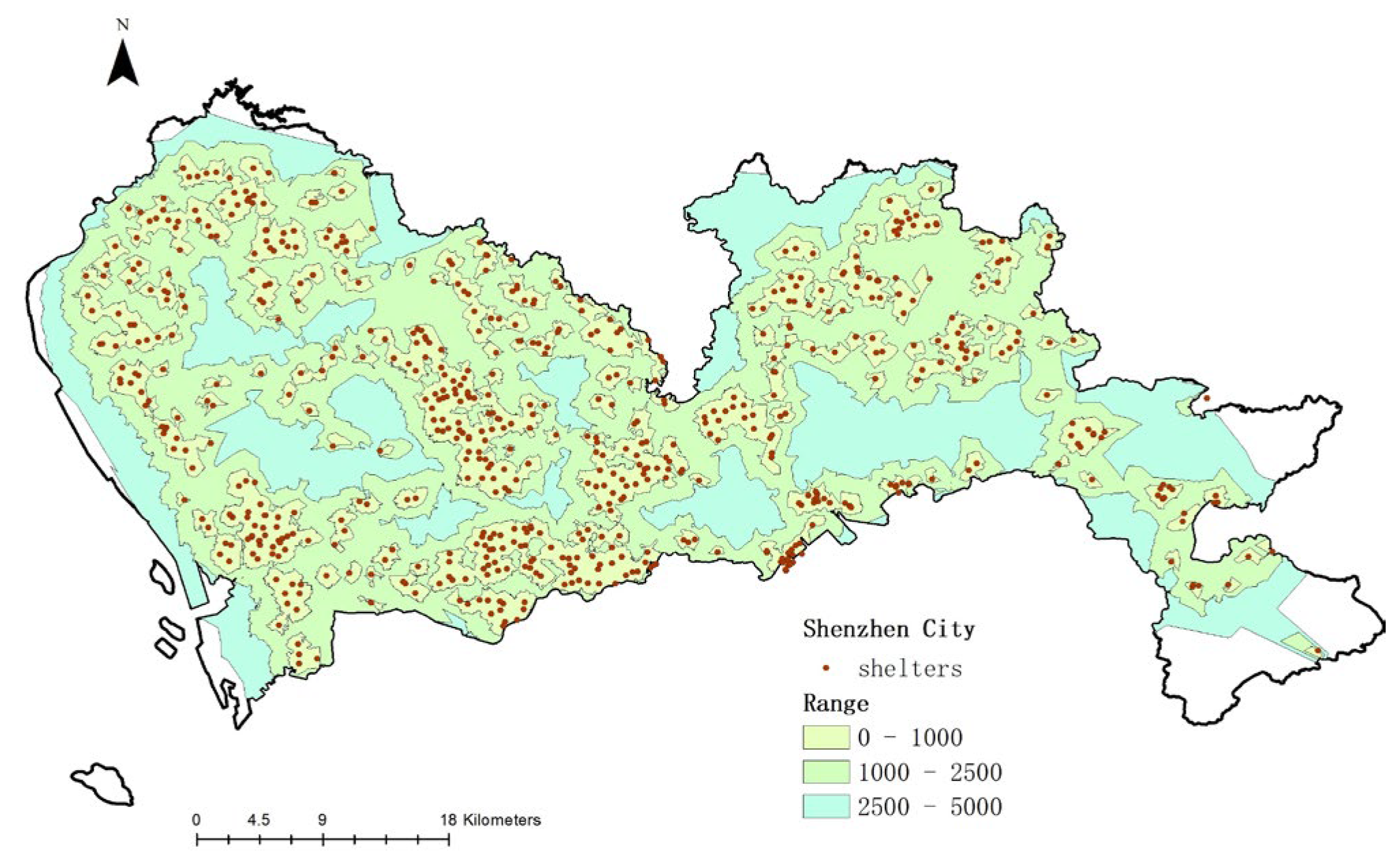
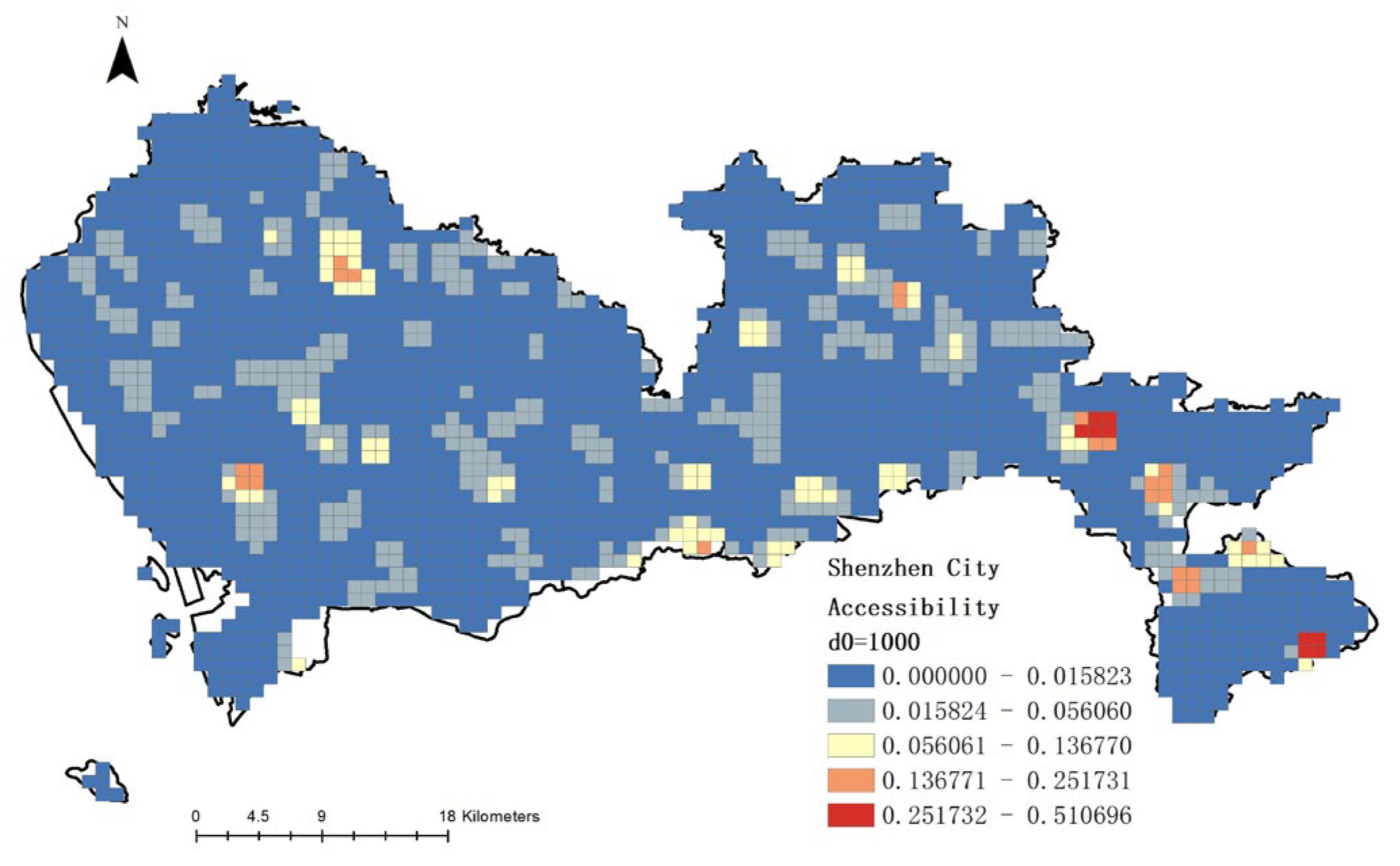
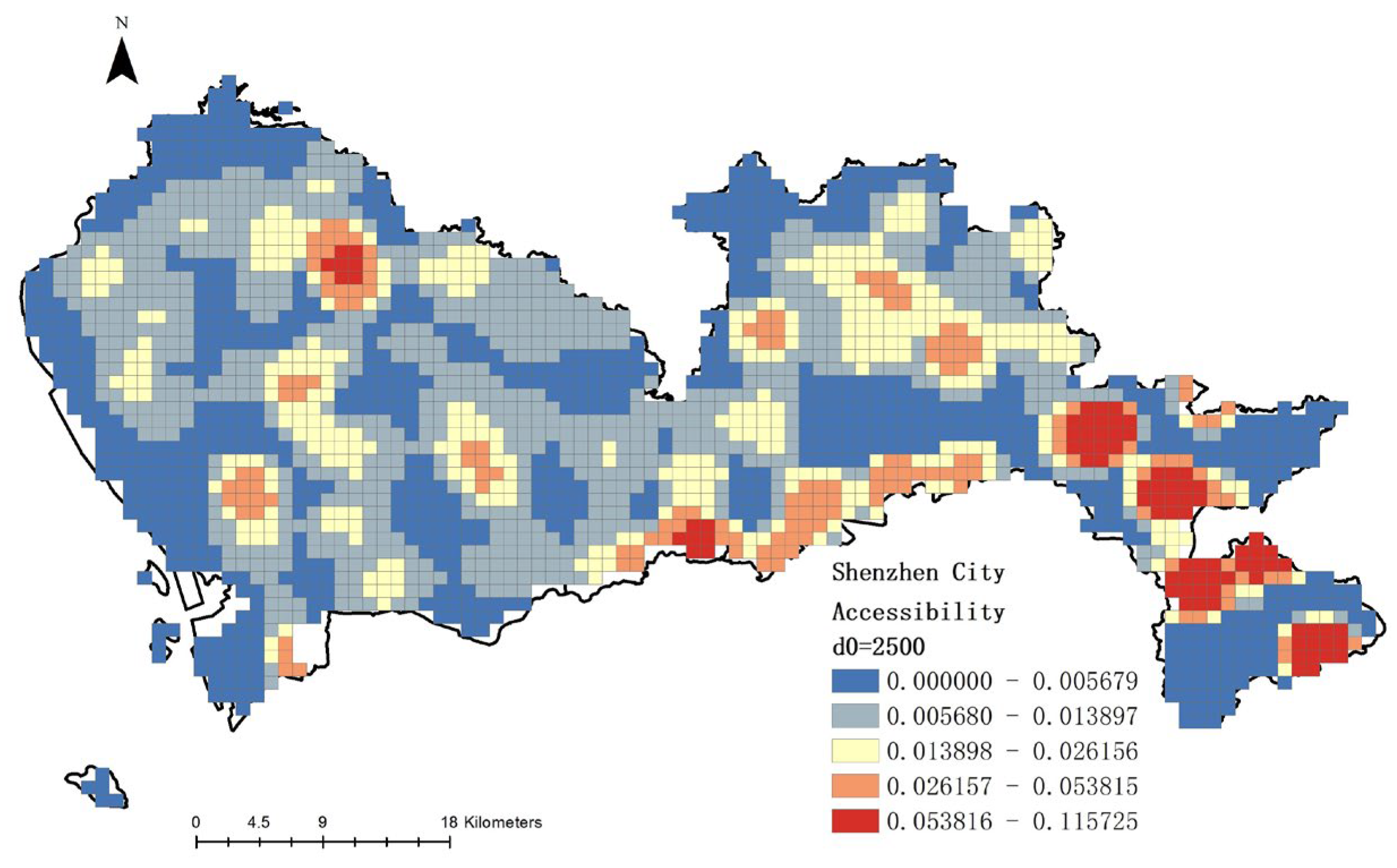
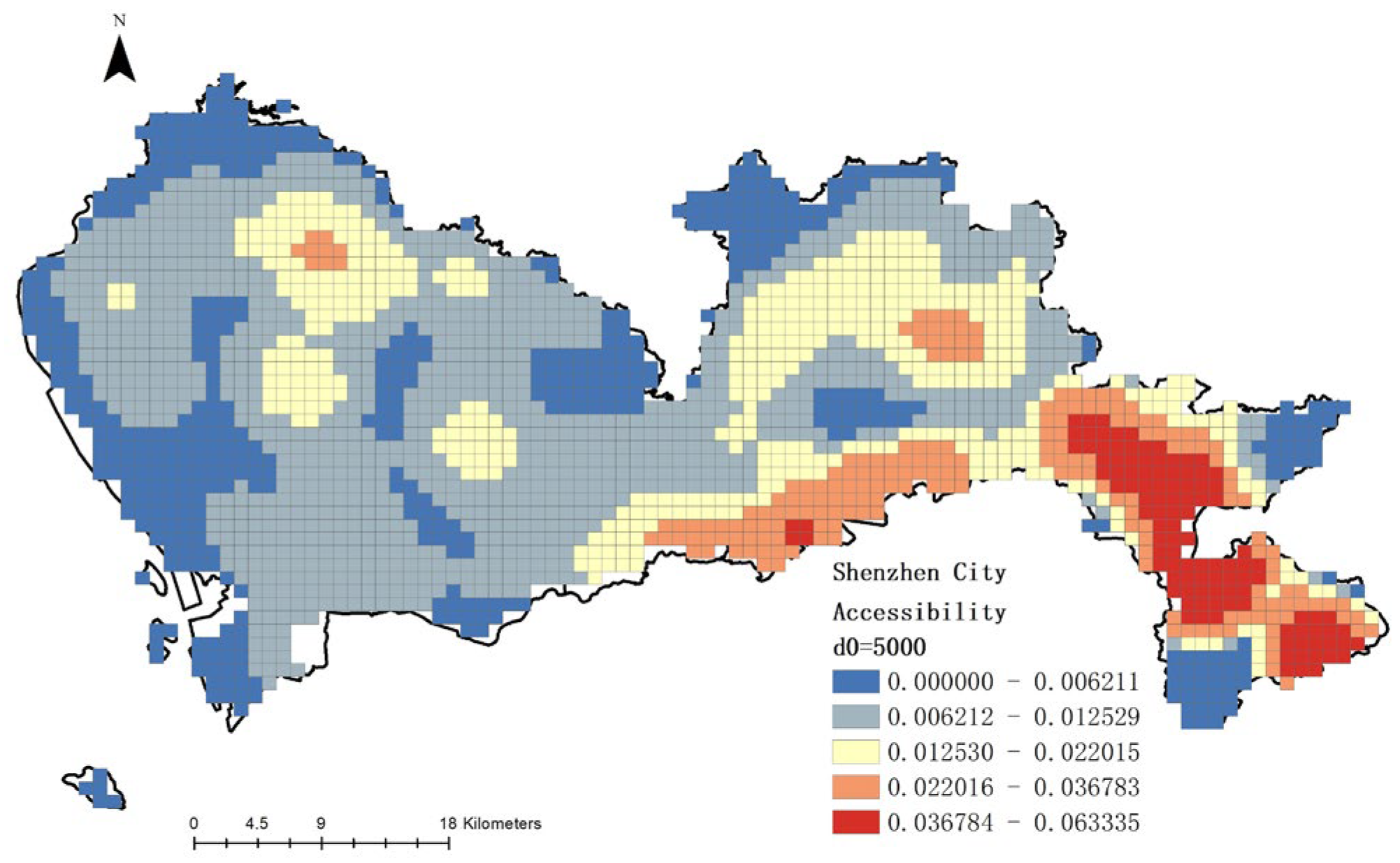


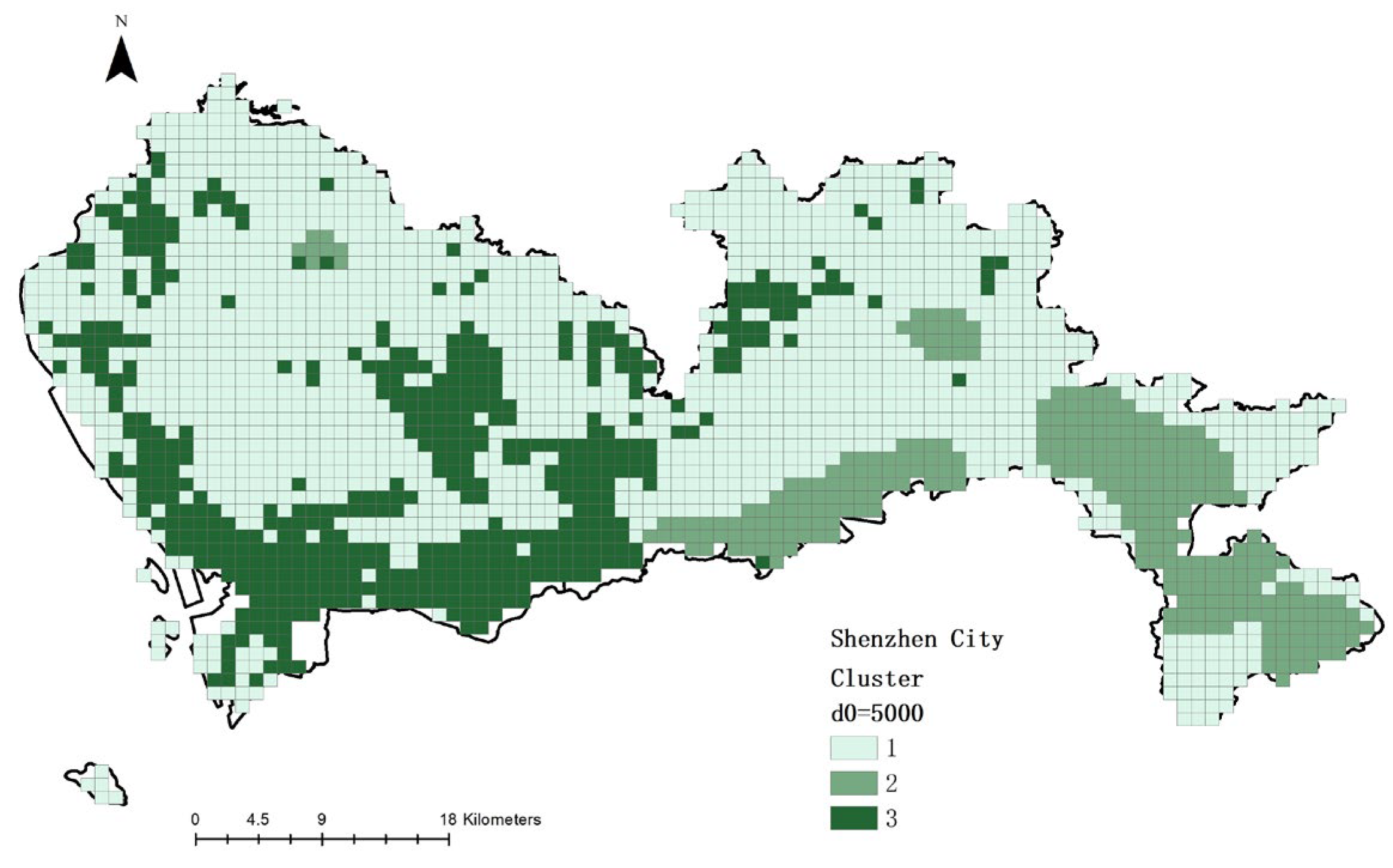
| Key Indicators | Emergency Shelters | Short-Term Shelters | Long-Term Shelters |
|---|---|---|---|
| Evacuation Duration | Within 1 day | 2–14 days | 15 days or more, generally not exceeding 180 days |
| Service Radius | 1 km, 10 min~15 min walk | Within 2.5 km, about 30–40 min walk | 70–90 min walk within 5 km If emergency shelter needs exceed 50,000 in the service radius, add long-term shelters as conditions permit |
| Facilities, Equipment, and Supplies | Equipped with emergency facilities, equipment, and supplies necessary for emergency assembly, material storage, sanitation and washing, waste storage and transport, emergency parking | Augment existing emergency shelter resources to support accommodation, command offices, medical care, quarantine, catering, sewage management, and security functions. | Based on the provision of emergency facilities and supplies in short-term shelters, it is essential to enhance the allocation of additional emergency facilities and resources that meet the functional requirements for cultural activities, temporary education, public services, and helicopter takeoff and landing. |
| Evacuation Duration | Within 1 day | 2–14 days | 15 days or more, generally not exceeding 180 days |
| Type | Demand | Supply | Accessibility | |
|---|---|---|---|---|
| Population Density | Road Network Density | Service Availability | ||
| 1 | 0.021351 | 0.074705 | 0.007542 | 0.028291 |
| Low | Low | High | ||
| 2 | 0.291168 | 0.491229 | 0.165843 | 0.017046 |
| High | High | Low | ||
| 3 | 0.106769 | 0.25565 | 0.019606 | 0.025775 |
| Medium | Medium | Medium | ||
| Type | Demand | Supply | Accessibility | |
|---|---|---|---|---|
| Population Density | Road Network Density | Service Availability | ||
| 1 | 0.034748 | 0.106838 | 0.008105 | 0.077474 |
| Medium | Low | Low | ||
| 2 | 0.188591 | 0.359438 | 0.069449 | 0.084127 |
| High | High | Medium | ||
| 3 | 0.015036 | 0.11337 | 0.014548 | 0.561101 |
| Low | Medium | High | ||
| Type | Demand | Supply | Accessibility | |
|---|---|---|---|---|
| Population Density | Road Network Density | Service Availability | ||
| 1 | 0.038631 | 0.113647 | 0.007625 | 0.147429 |
| Medium | Low | Medium | ||
| 2 | 0.020404 | 0.10495 | 0.016237 | 0.542364 |
| Low | Low | High | ||
| 3 | 0.197694 | 0.369643 | 0.074 | 0.137686 |
| High | High | Low | ||
Disclaimer/Publisher’s Note: The statements, opinions and data contained in all publications are solely those of the individual author(s) and contributor(s) and not of MDPI and/or the editor(s). MDPI and/or the editor(s) disclaim responsibility for any injury to people or property resulting from any ideas, methods, instructions or products referred to in the content. |
© 2025 by the authors. Licensee MDPI, Basel, Switzerland. This article is an open access article distributed under the terms and conditions of the Creative Commons Attribution (CC BY) license (https://creativecommons.org/licenses/by/4.0/).
Share and Cite
Yang, Q.; Liu, Y.; Duan, Z.; Liu, X. An Accessibility Analysis of Emergency Shelters in Shenzhen Using the Gaussian-Based Two-Step Floating Catchment Area Method and Clustering. Sustainability 2025, 17, 5250. https://doi.org/10.3390/su17125250
Yang Q, Liu Y, Duan Z, Liu X. An Accessibility Analysis of Emergency Shelters in Shenzhen Using the Gaussian-Based Two-Step Floating Catchment Area Method and Clustering. Sustainability. 2025; 17(12):5250. https://doi.org/10.3390/su17125250
Chicago/Turabian StyleYang, Qing, Yang Liu, Zhaolin Duan, and Xingxing Liu. 2025. "An Accessibility Analysis of Emergency Shelters in Shenzhen Using the Gaussian-Based Two-Step Floating Catchment Area Method and Clustering" Sustainability 17, no. 12: 5250. https://doi.org/10.3390/su17125250
APA StyleYang, Q., Liu, Y., Duan, Z., & Liu, X. (2025). An Accessibility Analysis of Emergency Shelters in Shenzhen Using the Gaussian-Based Two-Step Floating Catchment Area Method and Clustering. Sustainability, 17(12), 5250. https://doi.org/10.3390/su17125250






